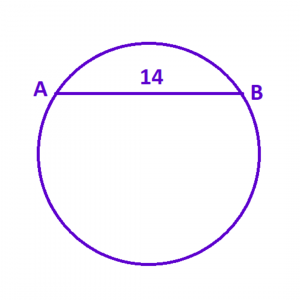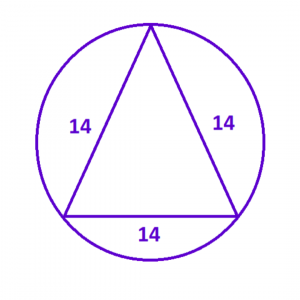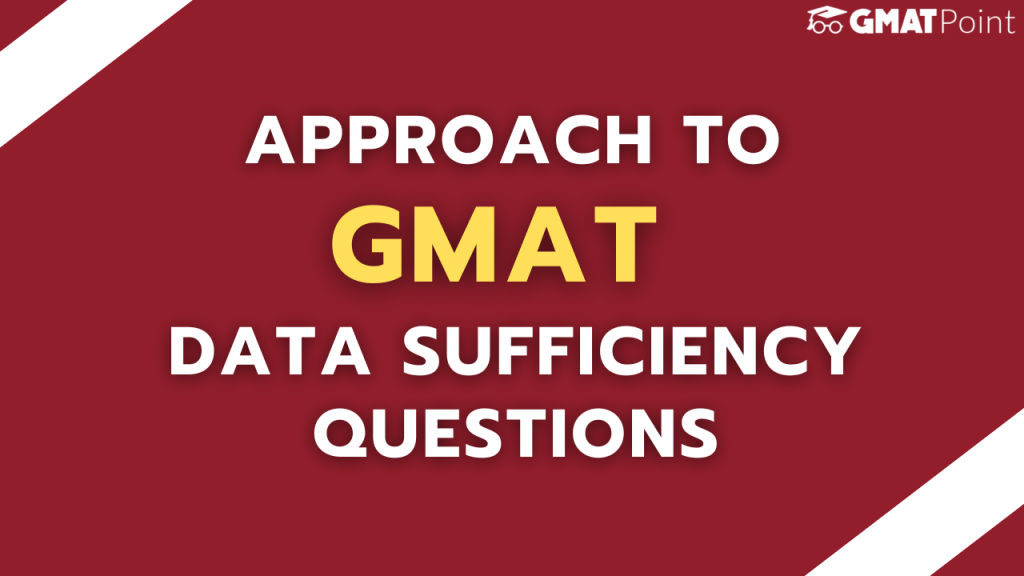One of the most important sections of the GMAT is the Quantitative Reasoning section, which tests a student’s ability to reason and solve problems in a time-bound environment. One specific type of question that appears in the Quantitative Reasoning section is Data Sufficiency.
Take Free GMAT 2023 Daily Targets
Subscribe To GMAT Preparation Channel
Understanding the Structure of Data Sufficiency Questions
Data Sufficiency questions consist of a question followed by two statements labelled (1) and (2). Your task is to determine whether the statements provide enough information to answer the question. The 5 answer choices are always the same:
- Statement (1) alone is sufficient, but statement (2) alone is not sufficient.
- Statement (2) alone is sufficient, but statement (1) alone is not sufficient.
- Both statements (1) and (2) together are sufficient, but neither statement alone is sufficient.
- Each statement alone is sufficient.
- Statements (1) and (2) together are not sufficient to answer the question asked.
The key to answering Data Sufficiency questions correctly is to understand that you should not always try to solve the problem entirely. You should determine whether the statements provide enough information to solve the problem. Even if you can solve the problem using one statement, you still need to evaluate the other statement to determine whether it is also sufficient to solve the question.
To better understand how to approach these questions, let us look at a good example.
Q) A, B, and C are three points on a circle. What is the circumference of the circle?
Statement I: The points are equidistant from each other.
Statement II: The minimum distance between points A and B is 14 cm.
- Statement (1) alone is sufficient but statement (2) alone is not sufficient.
- Statement (2) alone is sufficient but statement (1) alone is not sufficient.
- Both statements (1) and (2) together are sufficient, but neither statement alone is sufficient.
- Each statement alone is sufficient.
- Statements (1) and (2) together are not sufficient to answer the question asked.
Approach: The first step is to evaluate both statements individually.
Statement 1: It is given that the points are equidistant from each other. Thus, ABC is an equilateral triangle. But since we do not have the side of the triangle, we cannot answer this question using this statement alone.

Statement 2: The distance between A and B will give no information on the radius of the circle. Thus, we cannot answer the question using this statement alone.

After combining the information from both statements, we will get an equilateral triangle ABC with a side of 14 cm. From that we can find the circumradius of the equilateral triangle.
We know that for an equilateral triangle: R=a/√3.
We can conclude that both the statements are needed to find the circumference of the circle.

Common Mistakes
Contradicting Statements
It is important to note that in GMAT the two statements will never contradict each other.
Hence if, according to your understanding, one statement gives you a definitive ‘yes’ and the other statement gives you a definitive ‘no’, you need to backtrack and try understanding the statements again. Let us look at an example:
Q)Is positive integer x greater than 7?
Statement 1: x<8
Statement 2: The median of the set {3,7,x} is 7
- Statement (1) alone is sufficient but statement (2) alone is not sufficient.
- Statement (2) alone is sufficient but statement (1) alone is not sufficient.
- Both statements (1) and (2) together are sufficient, but neither statement alone is sufficient.
- Each statement alone is sufficient.
- Statements (1) and (2) together are not sufficient to answer the question asked.
Approach: From the first statement, it is a definitive ‘no’.
From the second statement, it looks like the number must be greater than 7 to be true.
However, we must not forget that the two statements cannot contradict each other. The second statement must have one case where atleast statement I is valid. Here, statement 2 also includes a case where x=7.
We can conclude that A is the correct option.
Not considering all the cases
Sometimes to get a definitive answer, you must consider all the cases where only statement I is known and cases where only statement II is known. Let us look at the following example:
Q)If a and b are integers, is a – b an even number?
Statement 1: a+5b is even.
Statement 2: ¿is even.
- Statement (1) alone is sufficient, but statement (2) alone is not sufficient.
- Statement (2) alone is sufficient, but statement (1) alone is not sufficient.
- Both statements together are sufficient, but neither statement alone is sufficient.
- Each statement alone is sufficient.
- Statements (1) and (2) together are not sufficient.
Approach: Let us form a table considering all the possibilities:
| a | b | a-b | a+5b | |
| even | even | even | even | odd |
| odd | odd | even | even | even |
| even | odd | odd | odd | even |
| odd | even | odd | odd | even |
We can see a clear correlation between a-b and a+5b, but no correlation between a-b and ¿.
Hence we can say that option A will be the correct option.
If we had taken any approach other than enumerating all the options, we would have been prone to making quite a few errors. Hence it is good practice to make a table and list out all the possible cases to prove a certain correlation when there are multiple possibilities.
Failing to Consider Individual Statements
This is one of the most common mistakes many candidates make in data sufficiency questions. Often, students think they need more information than provided in one of the statements because they fail to consider what is asked in the question. The students misjudge what each of the statements contain, or in other cases, what the question asks from them.

For example:
Q) If the triangles ABC and CDE are equilateral, what is the sum of their
perimeters?
Statement 1: AE has a length of 10 units
Statement 2: BC=2/3 DE
- Statement (1) alone is sufficient, but statement (2) alone is not sufficient.
- Statement (2) alone is sufficient, but statement (1) alone is not sufficient.
- Both statements together are sufficient, but neither statement alone is sufficient.
- Each statement alone is sufficient.
- Statements (1) and (2) together are not sufficient.
Approach: The problem looks deceptively simple. We know the total length of AE from statement 1. We know the ratio of the sides; hence we can find the individual lengths by combining the two statements and find the sum of perimeters.
However, consider what is asked in the question – the sum of perimeters. Let us consider x as the length of a side of ABC, and y as the length of a side of CDE. The sum of perimeters is: 3x+3y =3(x+y) =3AE.
We know from statement 1 that AE=10 units. Hence the sum of perimeters should be 30 units. Therefore, we can say that option A is the correct option.
In these problems, you should carefully look at what is asked in the question and quantify what is required as much as possible. Once we quantified the sum of perimeters, the problem became quite simple to us.
Keeping the above points in mind, if you want to improve in solving data sufficiency questions, you must practice as much as possible. An excellent tool to practice GMAT-level questions daily for free is GMATPoint Daily Targets. In Daily Target, you will get five questions on verbal and quants daily, for free, along with video solutions. Hence, it is an indispensable tool for any serious GMAT aspirant. Most of the examples that you’ve read in this article have been taken from Daily Targets by GMATPoint.
To know more about how to prepare for the quants section of the GMAT, check out our article: What’s Tested in the GMAT Quants Section?
Data sufficiency questions can be challenging, but avoiding these common mistakes can improve your chances of answering them correctly. Always read the question carefully, avoid making assumptions, simplify the problem, stick to the information provided, and consider both statements. With practice, you can become proficient in answering data-sufficiency questions and improve your overall test scores.
All the best.
If you are starting your GMAT preparation from scratch, you should definitely check out the GMATPOINT
Join GMATPoint Telegram Channel
Also Read:
- What Is GMAT? – Everything to know about the test
- How To Prepare For GMAT In 1 Month?
- What Is Tested In GMAT Verbal? How To Improve Verbal In GMAT?
- Introduction To GMAT Verbal Reasoning (With Solved Examples)
- How To Improve In GMAT Sentence Correction: Tips, Tricks, and Strategies
- 6 Interesting Facts About The GMAT Exam You Should Know
- GMAT preparation for beginners: What to Study and How
- 6 Best Practices for GMAT Preparation: The Ultimate Study Guide
- How To Study For GMAT With Full-time Job?
- Can You Study for GMAT On Your Own? A Step-by-step Approach
- Is GMAT Easy To Crack? What Makes GMAT Challenging
- How to start your GMAT preparation | 5 Tips To Crack GMAT
- Top colleges accepting GMAT scores in India
